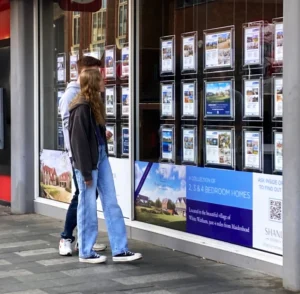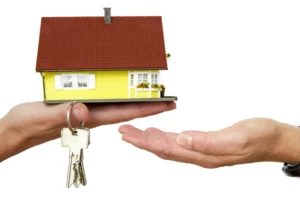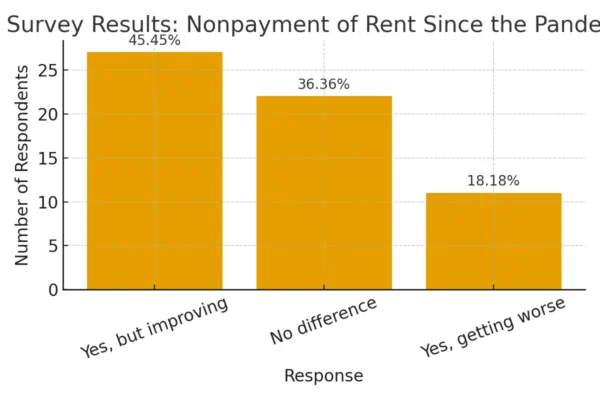Strategies to Fill Units Faster

Apartment Leasing Tips for 2026
If you’ve been in multifamily for a while (like we have), you already know that leasing apartments in 2025 looks nothing like it did a few years ago. Renters are moving faster, doing more research, and comparing more options than ever. A shiny “Now Leasing” banner isn’t enough anymore.
We’ve partnered with properties across the country, from boutique communities to large management portfolios, and we’ve seen what truly fills units and what just burns budget.
These are real-world apartment leasing strategies based on experience, not theory. Let’s walk through them step by step.
1. Your Website Is Your Leasing Office
Almost every renter starts their search online long before they ever tour in person. According to RealPage, 98% of apartment seekers consult websites, listings, reviews, and digital amenities before visiting. If your website is slow, outdated, or confusing, you’ll lose them before they even reach your leasing team.
A strong apartment website should:
- Load quickly. Use Google PageSpeed Insights to test performance and fix oversized images or scripts.
- Be mobile-friendly. Avoid floor plan PDFs that don’t open well on phones. Use live pages that resize cleanly for small screens.
- Answer real questions. Include clear details about parking, pet policies, and fees instead of hiding them behind a “Contact Us” form.
Think of your website as your digital leasing office. If someone walked into a messy or unorganized lobby, they’d turn around. Your website should feel just as inviting, clear, and easy to navigate.
2. Your Google Business Profile Is Your Digital Curb Appeal
Your Google Business Profile (GBP) is often the first impression renters get of your property. It’s your storefront in search results.
We see it all the time: old photos, broken links, and mismatched office hours. Those small details can break trust immediately. Renters assume that if you can’t maintain your online presence, you might not handle maintenance requests well either.
Your Name, Address, and Phone number (NAP) should be consistent across every site where your property appears. Google and renters both notice when details don’t line up.
Once your information is correct, keep it active:
- Add new photos at least once each quarter.
- Post updates regularly, like specials or resident events.
- Respond to every review, even short ones. A simple “Thank you for your feedback” helps build credibility.
Your GBP may be the deciding factor between a click and a scroll. Keeping it accurate and fresh doesn’t cost anything but time.
3. Show Units the Way People Actually Live
Photos and videos can make or break interest. If your visuals feel empty or overly staged, renters won’t connect.
The best approach combines polished photography with authentic content:
- Use professional photos for clean, bright views of your spaces.
- Capture real moments with short, natural clips that show how people use the space.
- Record a simple reel walking from your building to the nearest coffee shop.
We often create this content during on-site visits with clients, blending pro shots with real-life moments that double as social and website visuals. Renters want to imagine their daily lives there, not just admire empty rooms.
Screen Your Tenant Today!
Gain peace of mind with AAOA’s credit, criminal, and eviction reports.
4. Rethink Concessions
In many markets, “one month free” has lost its power. Renters see it everywhere. Try offering perks that feel personal and memorable instead:
- Cover a moving truck rental.
- Waive pet fees for the first year.
- Give new residents a gift card to a local coffee shop.
Smaller, thoughtful gestures often stand out more than larger financial incentives because they feel human and immediate.
5. Support Your Leasing Team With Real Tools
Marketing can generate leads, but your leasing team closes them. Give them tools that make their work easier and faster.
Start with the basics:
- Use a CRM like EliseAI or Yardi CRM to track leads and follow-ups.
- Automate responses with text and email confirmations that go out immediately after someone fills out a form.
- Track performance by monitoring response times, missed calls, and email follow-up rates.
Leasing is sales, and speed makes all the difference.
6. Focus on Retention
The easiest lease to sign is a renewal. Every resident you retain saves you the cost, time, and stress of finding a new one.
Strong retention strategies often include:
- Reaching out months before a lease expires.
- Offering flexible renewal options with small rent adjustments.
- Hosting simple resident events that build community and goodwill.
Many owners spend heavily on ads but neglect retention. Keeping the residents you already have is one of the most effective ways to protect occupancy.
7. Let Data Drive Your Efforts
Don’t throw money at ads without understanding what’s working. Track every lead from start to finish:
- Which channels are generating inquiries.
- Which ones convert to signed leases.
- How much you’re spending per lease from each source.
Once you know this, you can stop wasting money on underperforming platforms and double down on the ones that deliver.
8. Sell the Neighborhood, Not Just the Building
Renters are choosing a lifestyle, not just a unit. Show what life looks like beyond the walls.
Create local guides, short videos, and blog posts about nearby shops, parks, and dining. When prospects can imagine themselves living their daily lives there, the property becomes more than an address—it becomes a community.
9. Keep Paid Ads in the Mix
Organic visibility builds credibility, but paid ads still move the needle when you need leases fast.
Start with Google Ads to reach renters actively searching “apartments near me,” then layer in Meta ads for awareness and remarketing to re-engage visitors who didn’t convert.
Always connect your ad data to real conversions so you’re investing where it counts.
10. Make Leasing Seamless
Today’s renters expect convenience. If booking a tour requires a phone call during business hours, they’ll look elsewhere.
Make it simple:
- Offer online scheduling and self-guided tours.
- Ensure applications work on mobile devices.
- Follow up with a personal text after a tour.
Technology should support the process, not replace the human touch. Renters still want to feel like there’s a real person on the other end.
Source: Multifamily Insiders













 Accessibility
Accessibility